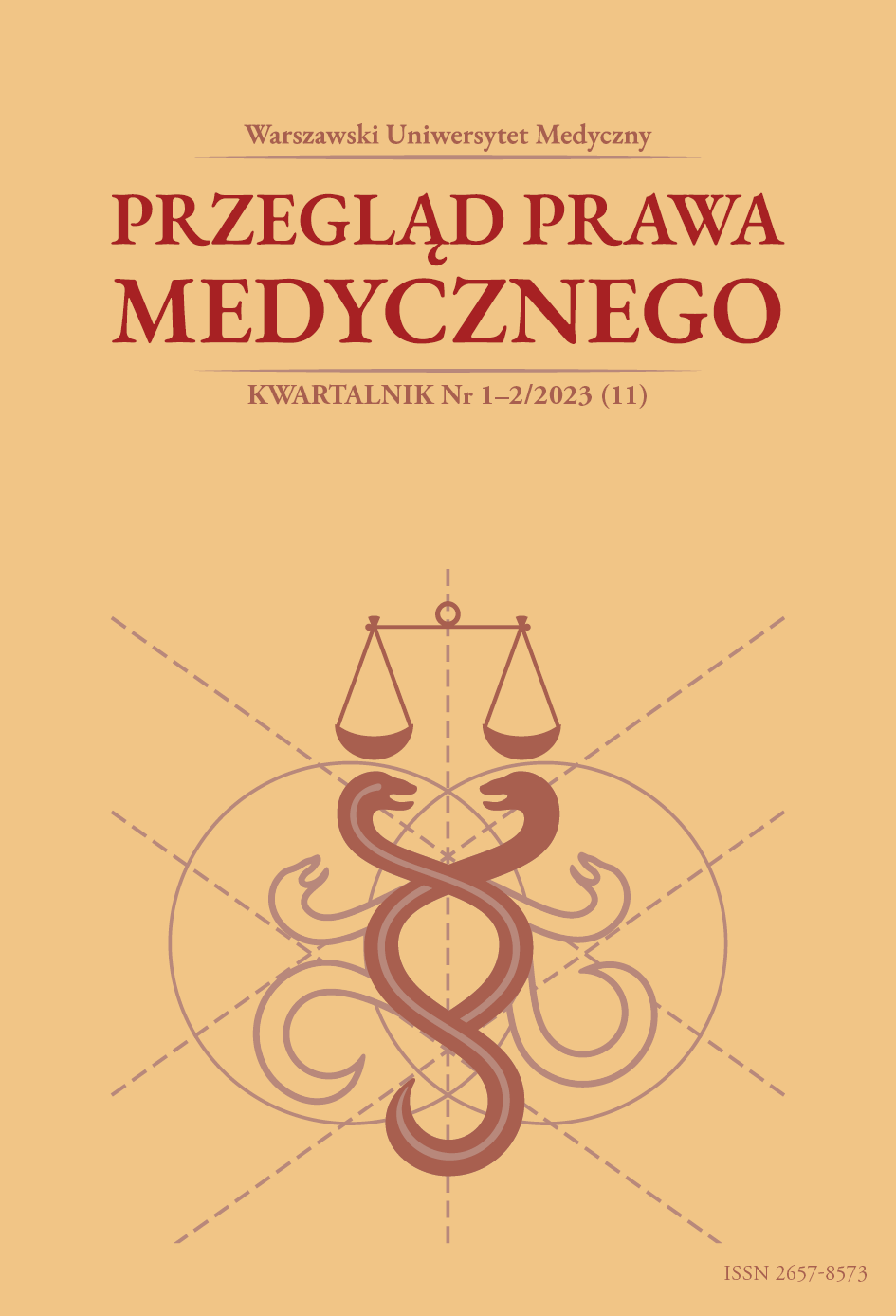Abstract
The presented article discusses one of the issues concerning the perception of the facts of the events taking place, which is extremely important in medical practice, despite various forms of documentation. Here, it is specifically presented in relation to anaesthesiology, a medical specialty characterized by high dynamics of changes occurring in a short time interval. The effects of insufficient proper assessment of the event, especially in a difficult situation, may result in the formation of cognitive errors, which is the essence of the issue
References
F. Arnstein, Catalogue of human error; „Br. Journ. Anaesth.” 1997, nr 79
M. Bar, I. Biederman, I. Sublimal Visual Priming, „Psychological Science” (1998), 9
P. G. Barash, F. Cullen, R. K. Stoelting, Clinical anesthesia ,J.B. Lippincott, Philadelphia 1989
G. T. Bike, S. D. Surgenor, K. A. Whalen, A graphical objects display improves anesthesiologists’ performance on a simulated diagnostic task, „Jour. Clinical Monitoring” 1995 nr 5
R. Botney, D. Gaba, S. Howard, B. Jump The role of fixation error in preventing the detection and correction of a simulated voilate anesthetic overdose, „Anesthesiology” 1993, 79 A.1115
G. Boquet, J. Bushman, H. Davenport, The anaesthetic machine a study of function and design, „Br. J. Anaesth.” 1980,52
J. G. Brock-Utne, Anestezjologia. Ciekawe przypadki kliniczne, PZWL Warszawa 2014
M. R. Endsley, Towards a theory of situation awareness in dynamic system, „Human Factors” 1995, 37
D. M. Gaba, S. K. Howard, S. D. Small, Situation awareness in anesthesiology, „Hum. Fact.” 1995, 37 [1]
D. M. Gaba, Human Work Environment and Simulators, [w] Anesthesia, red R.D. Miller, Churchill Livingstone, 1999
B. Hartmann, G. Secrist, Situation awareness in more than exceptional vision, “Aviat. Space Environm. Med.” 1991, 62
R. Helmreich, H. Schaefer, Team performance in the operating room, [w] Human error in medicine, red: M. S. Bogner, Lawrence Erlbaum Hillsdale New York 1994
B. Kamiński ( red)., Anestezjologia podręcznik dla studentów medycyny, PZWL Warszawa 1975
J. Kozielecki, Psychologiczna teoria decyzji, PWN Warszawa 1977
D. Liu, S. A. Jenkins, P. Sanderson, M. Watson, T. Leane, A. Kruys, W. J. Russel, Monitoring with Head-Mounted Displays: Performance and Safety in a Full-Scale Simulator and Part-Task Trainer, „Anesthesia and Analgesia” 2009 (October) 109, 4,
A. Manterys, Klasyczna idea definicji sytuacji, ISNS UW Warszawa 2000
T. Marek, M. Fąfrowicz, I. Iskra – Golec, Dzienny przebieg zmienności dekoncentracji wzrokowej [w] Kolokwia Psychologiczne, Komitet Nauk Psychologicznych PAN, Warszawa 1997
J. W. R. McIntyre, Man machine interface: the position of the anaesthetic machine in the operating room, „Can. Anest. Soc. Journ.”, nr.1/1982 (vol.29),
E. Olszewska, Przekaz podprogowy w reklamie jako manipulacja i zagrożenie dla poczucia bezpieczeństwa konsumenta, „Zeszyty Naukowe WSOWL”, Nr 2 (168) 2013
K. von Ompteda, The Influence of Stroke Width on Legibility for Low Vision Adults: Integrating Scientific & Design Knowledge on Typeface Boldness, Royal College of Art., 2022
M. Podraza - Siegler, A. Tung, Cognitive Processes in Anesthesiology. Decision Making, „Anesthesiology” nr. 1/2014, (vol. 120),
A. S. Reber, E. S. Reber, Słownik psychologiczny, Scholar, Warszawa 2005
J. Reason, Bezpieczeństwo w sali operacyjnej – część 2: Błąd ludzki a zła organizacja, „Aktualności w anestezji i intensywnej terapii” 1996, V, 2
N. Sarter, D. Woods, Situation awareness: A critical but ill – defined phenomenon, „Int. Journ. Aviat. Psych.” 1991, 1
D. P. Schultz, S. E. Schultz, Psychologia a wyzwania dzisiejszej pracy, PWN, Warszawa 2002
Słownik francusko – polski i polsko – francuski, red. E. Piotrkiewicz – Karmowska, G. Kamińska, Wyd. DELTA W-Z br. m. i r. wyd
J. Stanisławski, Wielki słownik angielsko polski, T. A- N, „Philip Wilson”, br. m. wyd. 1999
J. F. Terelak, A. Tarnawski, Trudność zadania, jako źródło stresu, [w] Źródła stresu, red. J. F. Terelak Wyd. ATK, Warszawa 1999
D. Trusiewicz, A. Kordalewska, Z. Makszowska – Chętnik, Ocena układu wzrokowego - ocena stanu psychosomatycznego maszynistów bezpośrednio po przejechaniu sygnału „stój”, „Medycyna Komunikacyjna” Nr.1[I - II]/1989
T. Tyszka, Psychologiczne pułapki oceniania i podejmowania decyzji, Gd. Wyd. Psych., Gdańsk 1999
L. S. G. L. Wauben, C. M. Dekker-Van Doorn, J. D. H. Van Wijngaarden, R. H. M. Goosens. R. Huijsman, J. Klein, J. F. Lange, Discrepant percepcions of communication, teamwork and situation awareness among surgical team members, „Int. Journ. for Quality in Health Care”, 2011 (vol 23)
M. Weinger, C. Englund, Ergonomic and human factors affecting anesthetic vigilance and monitoring performance in the operating room environment, „Anesthesiology” 1990
Ph. Zimbardo, R. Gering, Psychologia i życie, Wydawnictwo Naukowe PWN Warszawa 2012
Strony internetowe
http://www.radareu.cz/?lng=pl&core=mc

This work is licensed under a Creative Commons Attribution 4.0 International License.
Copyright (c) 2023 Maria Turos

